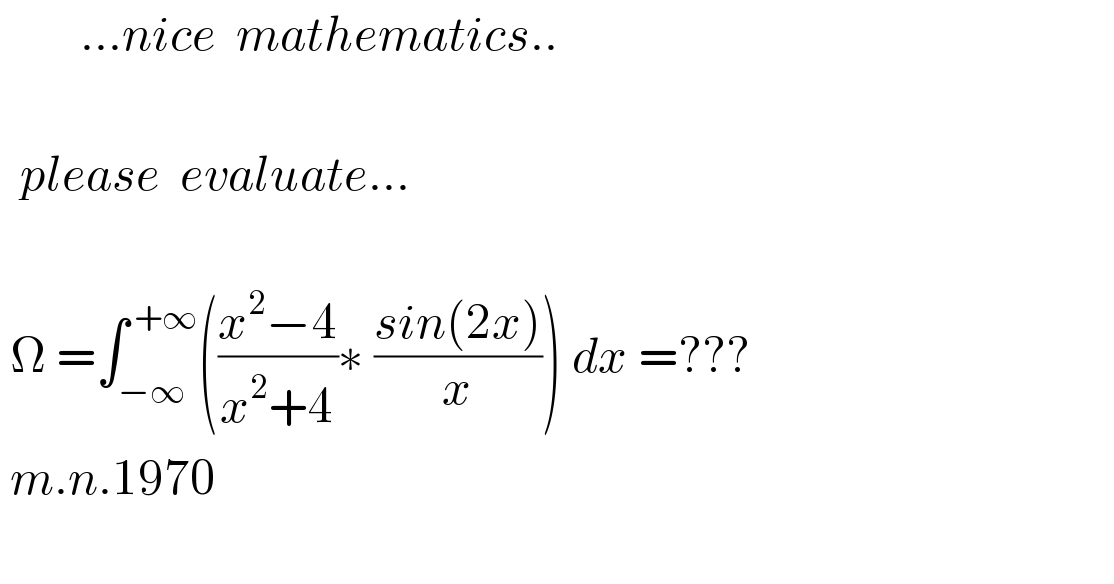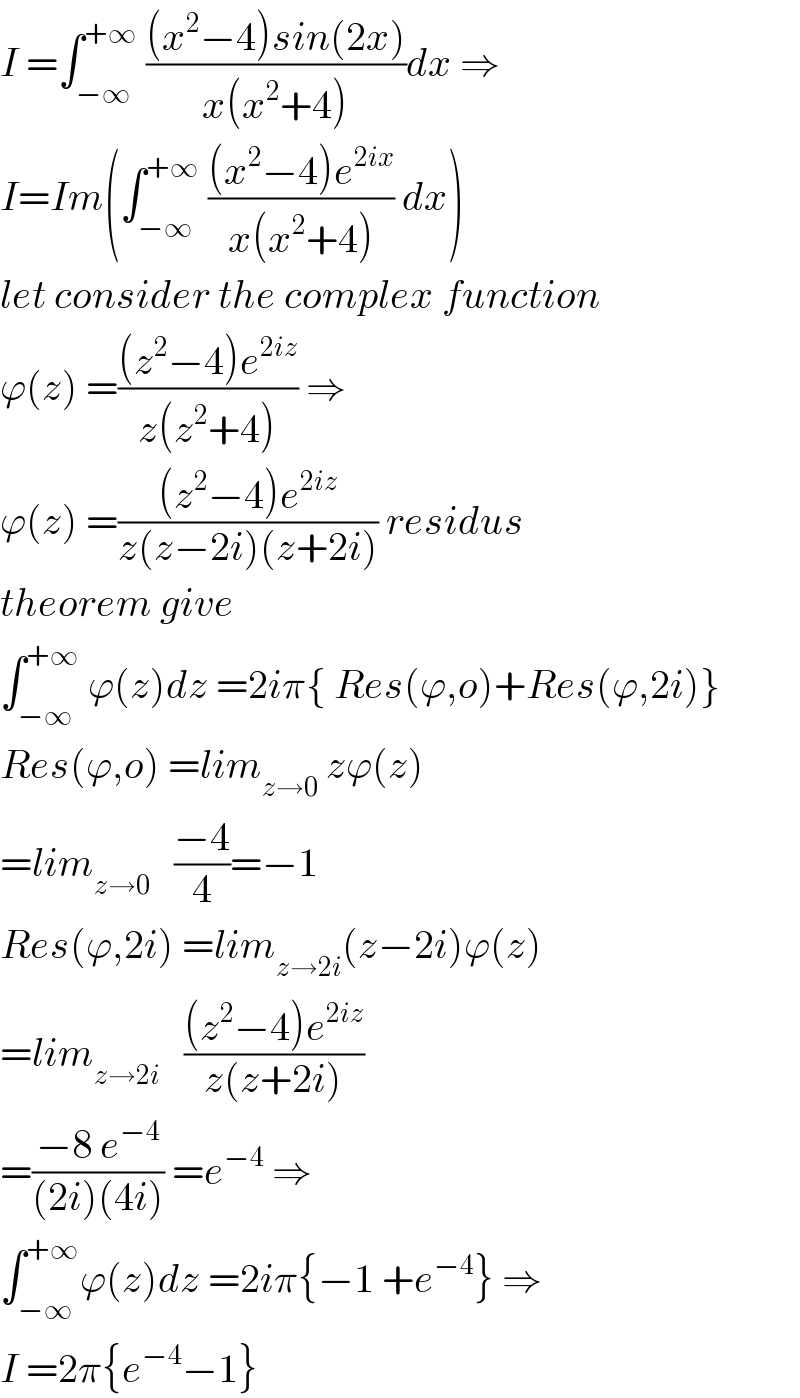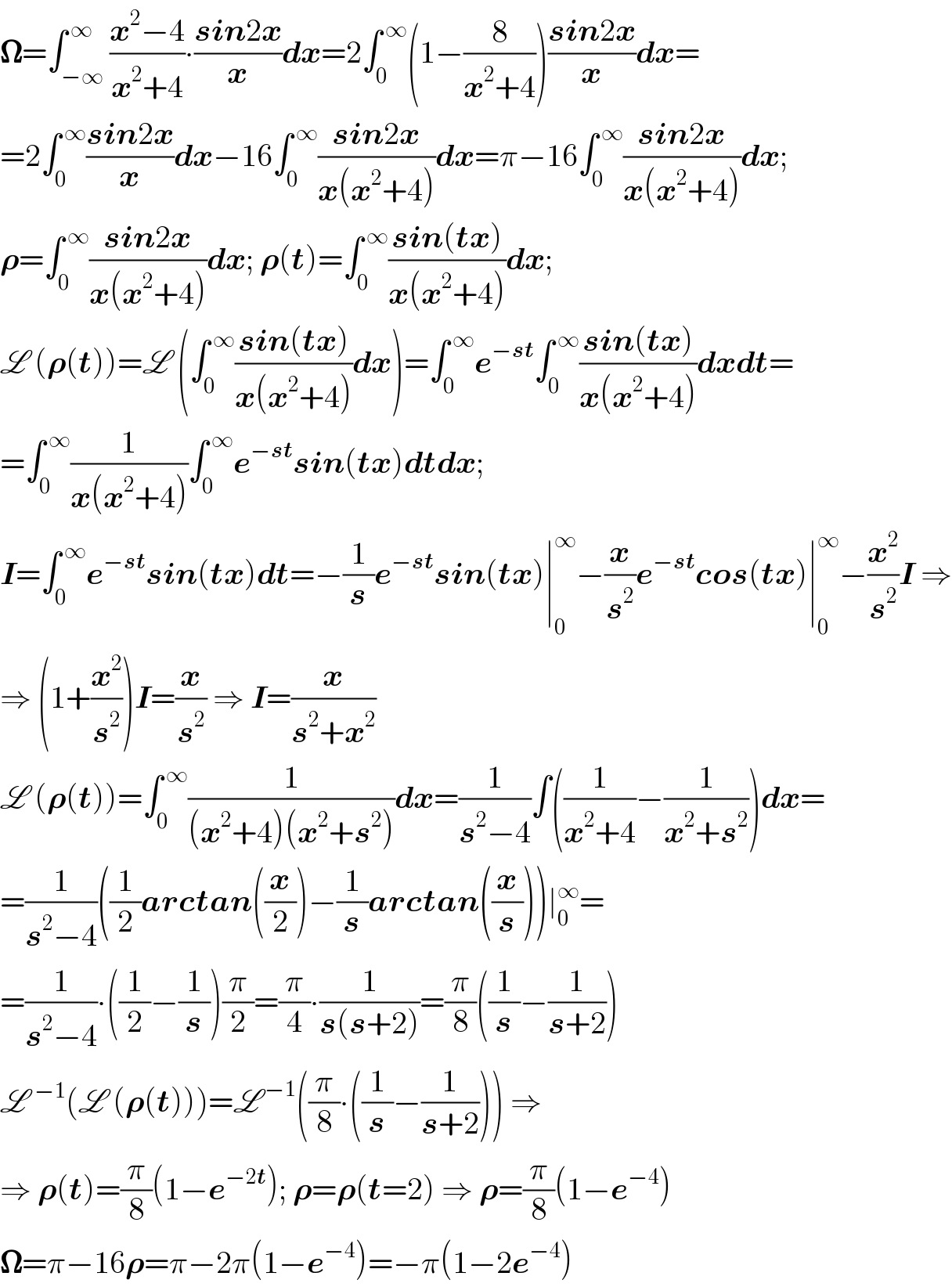
Question and Answers Forum
Question Number 117121 by mnjuly1970 last updated on 09/Oct/20

Answered by Bird last updated on 10/Oct/20

Commented by AbduraufKodiriy last updated on 10/Oct/20

Answered by AbduraufKodiriy last updated on 09/Oct/20

Commented by mnjuly1970 last updated on 09/Oct/20

